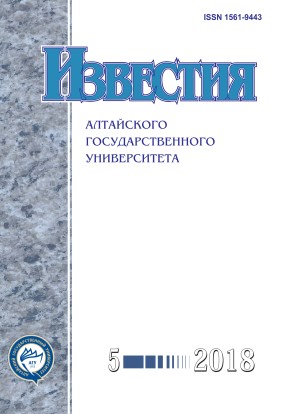The Shanghai Cooperation Organization as a Settlement Mechanism for the Boundary-territorial Issue between the Kyrgyz Republic and the PRC
Abstract
The article considers the main stages of border problems and Russian-China demarcation in Central Asia and Kyrgyzstan. After collapse of the USSR in 1991, as we know, the border between the Peoples Republic of China (PRC) and the USSR was transformed in connection with formation of new independent states on post soviet stereogram.
China began to border not only with Russia, but with Kyrgyzstan, Kazakhstan and Tajikistan. It means the necessity of the solution the boundary problems with several states, which resulted from Russia-China and Soviet-China interstate relations. In this condition the first class task was the necessity to keep good relation and enhance regional rules of security and stability in the region. The main outcome of China intiative became the forum of five states. “The Shanghai Five” and then the full-scale international organization the Shanghai Cooperation Organization.
For a long time (period during Russian Qinamol Soviet) agreement of border questions between these countries were not reacned. On the third stage of the Post-Soviet period (the end of 20th centuries and the beginning of 21st centuries) territorial problems were solved exclusively with peaceful diplomatic resources. Practical activitiesof SCO facilitated solving the issues related to the relationship between China and Kyrgyzstan and other state members of SCO.
Downloads
Metrics
References
Моисеев В.А. Россия и Китай в Центральной Азии (вторая половина XIX в. — 1917 г.). — Барнаул, 2003.
Кыргызско-китайская граница: исторические документы и научные работы. — Бишкек, 2002.
Воскресенский А.Д. Китай и Россия в Евразии: историческая динамика политических взаимовлияний. — М., 2004.
Петров В. Как образовались «белые пятна» на киргизо-китайской границе — версия Бишкека. Во всем виноват П. Семенов-Тянь-Шаньский [Электронный ресурс]. — URL: http://www.centrasia.ru/newsA.php?st=1025495880.
Восточный вектор внешней политики Кыргызстана: Азиатско-Тихоокеанский регион и Ближний Восток / под общ. ред. А.Л. Салиева. — Бишкек, 2011.
Соглашение о руководящих принципах взаимного сокращения вооруженных сил и укреплении доверия в военной области в районе советско-китайской границы // Сборник российско-китайских договоров. 1949–1999. — М., 1999.
ШОС как фактор интеграции: фундаментальное исследование / под ред. А.Л. Салиева. — Бишкек, 2012.
Суздальцев А.И. Постсоветское пространство: единство и многообразие // Россия и мир. Новая эпоха. 12 лет, которые могут все изменить / под ред. С.А. Караганова. — М., 2008.
«О межгосударственных договорах» от 22 июня 1999 г.; Дополнительное соглашение между Кыргызской Республикой и Китайской Народной Республикой о кыргызскокитайской государственной границе: Закон Кыргызской Республики от 26 августа 1999 г. Ратифицировано Законом КР от 25 мая 2002 г. № 88 [Электронный ресурс]. — URL: http://cbd.minjust.gov.kg/act/view/ru-ru/17375.
О кыргызско–китайской границе // Слово Кыргызстана. — 2001. — №36.
Izvestiya of Altai State University is a golden publisher, as we allow self-archiving, but most importantly we are fully transparent about your rights.
Authors may present and discuss their findings ahead of publication: at biological or scientific conferences, on preprint servers, in public databases, and in blogs, wikis, tweets, and other informal communication channels.
Izvestiya of Altai State University allows authors to deposit manuscripts (currently under review or those for intended submission to Izvestiya of Altai State University) in non-commercial, pre-print servers such as ArXiv.
Authors who publish with this journal agree to the following terms:
- Authors retain copyright and grant the journal right of first publication with the work simultaneously licensed under a Creative Commons Attribution License (CC BY 4.0) that allows others to share the work with an acknowledgement of the work's authorship and initial publication in this journal.
- Authors are able to enter into separate, additional contractual arrangements for the non-exclusive distribution of the journal's published version of the work (e.g., post it to an institutional repository or publish it in a book), with an acknowledgement of its initial publication in this journal.
- Authors are permitted and encouraged to post their work online (e.g., in institutional repositories or on their website) prior to and during the submission process, as it can lead to productive exchanges, as well as earlier and greater citation of published work (See The Effect of Open Access).








